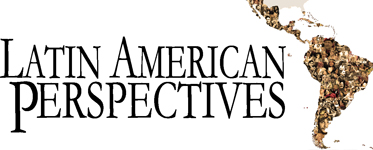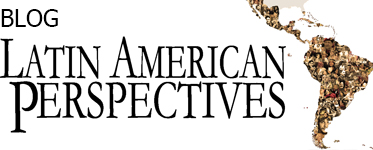By Iván Sandoval-Cervantes | April 24, 2020
Assistant Professor
Department of Anthropology
University of Nevada, Las Vegas
Although some news sources have highlighted the importance of differentiating between “physical distance” and “social distance”—emphasizing how “social distancing” might imply isolation, which is not good for mental wellbeing (https://www.aljazeera.com/news/2020/03/physical-distancing-social-distancing-200330143325112.html)—while “physical distancing” still allows us to be “alone, together”. The argument is that even when you cannot take care of someone physically, you can still show that you care about someone remotely. It is, of course, perfectly understandable that experts recommend physical distancing in order to slow down the spread of COVID-19. However, for some people the physical distancing and the restrictions of movement that it entails result in the impossibility of caring, in addition to being able to take care of someone. As we rely more and more on different forms of care to stay alive, and to stay healthy, we risk redefining what forms of care are permissible in a permanent way and without taking into account how different communities continue to see care and respect in physical ways that are seen as movements of contagion. This is particularly true in cultural contexts where the expectation is that care and affection are physical as well as emotional expressions.
As a Mexican anthropologist who has lived in the United States for almost ten years, it has become evident that discussions of care in the times of COVID-19 occasionally ignore how in some cultural contexts the expectation is that care and affection are to be expressed physically and emotionally. Thus, here I want to briefly discuss what care means in other contexts, particularly in the Mexico-U.S. border and in Mexico.
In the middle of April, my grandmother passed away in El Paso, Texas. My mother, who had been one of her main caregivers, wasn’t able to say good-bye. Although my mother lives just a few miles away, she couldn’t visit her mother one last time as she lives in Ciudad Juarez, Mexico, and her crossing to El Paso, Texas was therefore deemed as “non-essential” (anecdotally, others have reported that they have been threatened to have their crossing documents removed if they attempt to cross again). In fact, my mother hadn’t seen my grandmother in three weeks: the last time she visited with her was when the closing of the Mexico-U.S. border was announced on March 20th. I clearly remember texting her to inform her that the border was to be closed, so that she wouldn’t get stuck in El Paso, which,—of course, she already knew. My grandmother did not die of COVID-19, but the current state of affairs limited who was able to say goodbye and to show her they cared one last time.
I am well aware that my family is not the only one in going through this. Numerous migrant families– families divided by borders and migratory status–are facing the tough challenge of showing their loved ones that they care for them from afar. Many will probably reach a point where remote caring will not be enough, even while other forms of caring will be labelled as non-essential.
In this context, even if we celebrate care-workers, we still consider other forms of care as not essential. Some forms of care are even seen as dangerous. It has barely been a month since universities “transitioned” to online classes and we were instructed to practice “physical distancing,” and already some forms of care are being questioned as non-essential, dangerous, and as things to be avoided.
In early April, Dr. Anthony Fauci, who has gained national recognition as one of the nation’s top infectious disease experts, stipulated that the handshake could become a thing of the past: “just forget about shaking hands. We don’t need to shake hands. We’ve got to break that custom”, he said (https://www.cnn.com/world/live-news/coronavirus-pandemic-04-08-20/h_9d387b68d1c653f0bb54cb0d866fb3b6). But for some communities, shaking hands is not merely a “greeting,” it can also be a showing of respect. In Zegache, Oaxaca, where I did my doctoral fieldwork, the “handshake” is not so much a “shake” as it is a soft, momentary holding of someone’s hand. There’s no shaking, just an acknowledgement of somebody’s else presence. It is a sign of respect, not an expression of one’s personality like in the U.S. (https://www.forbes.com/sites/jennifercohen/2015/06/02/7-super-revealing-things-your-handshake-says-about-you/).
The evils of handshaking in the times of COVID-19 made headlines in Mexican newspapers when Mexico’s president, Andres Manuel Lopez Obrador, commonly known as AMLO, shook the hand of the mother of the infamous Joaquin “Chapo” Guzman while touring the northwestern state of Sinaloa (while facing pressures to send a stronger message regarding physical distancing) (https://www.chicagotribune.com/espanol/sns-es-coronavirus-amlo-estrecha-mano-madre-chapo-20200330-yn2p27drb5c6fi4m636vgfpg64-story.html). A lot could, and has, been said about what the encounter between AMLO and Chapo’s mother means, but here I want to focus on AMLO’s response when questioned about the incident. “I am not a robot. I have feelings”, he said, emphasizing how he couldn’t refuse to shake an elderly’s woman hand. It was a sign of respect (https://www.forbes.com.mx/politica-como-voy-a-dejar-la-mano-tendida-adulta-mayor-dice-amlo-saludo-madre-el-chapo/).
Meanwhile, in other parts of Mexico, health professionals, those in charge of providing care for those who are suffering from COVID-19 are being targeted as hazardous and contagious. Some nurses have been told that they “are bringing the COVID-19” as they try to board the bus or go to the grocery store (https://verne.elpais.com/verne/2020/04/13/mexico/1586810735_002679.html).
Care, in some of these instances, is not only seen as non-essential but as potentially dangerous, a source of contagion. As the world braces itself for what is to come, and we try to grasp what it means for something to be “essential”, we are redefining how we express care. This redefinition might be momentary but it could become permanent. For some people, like my mother, who was told that being there for my grandmother was not “essential”. This non-essentiality of saying goodbye to one’s parents was only detected because it required the crossing of an international border. The handshake as a sign of care and respect might disappear, as Dr. Fauci suggested. The question remains: what will care look like once we are no longer physically isolated?



